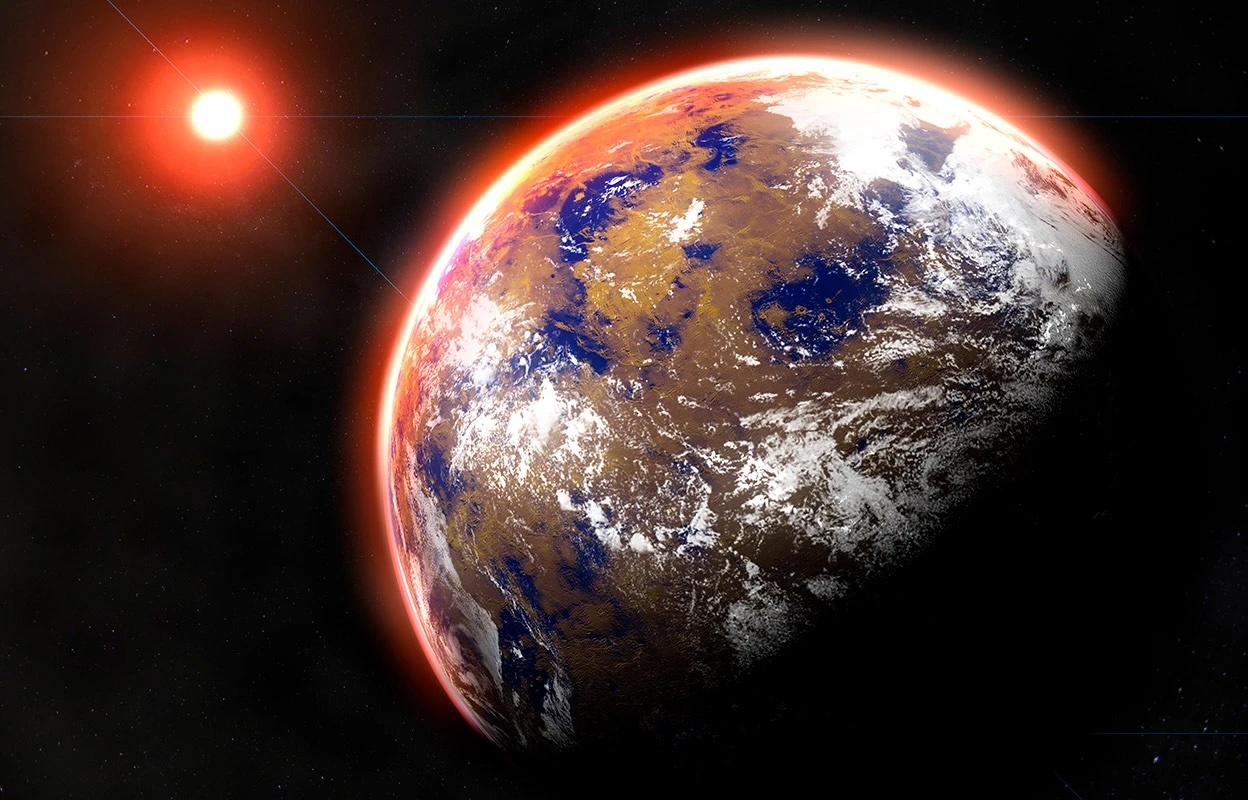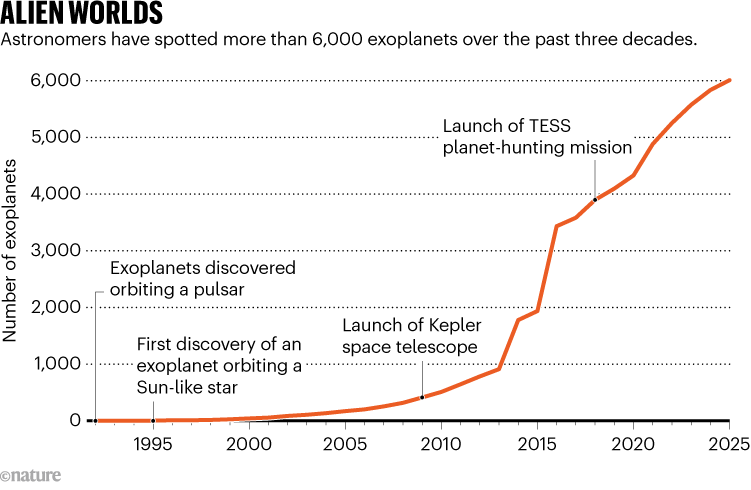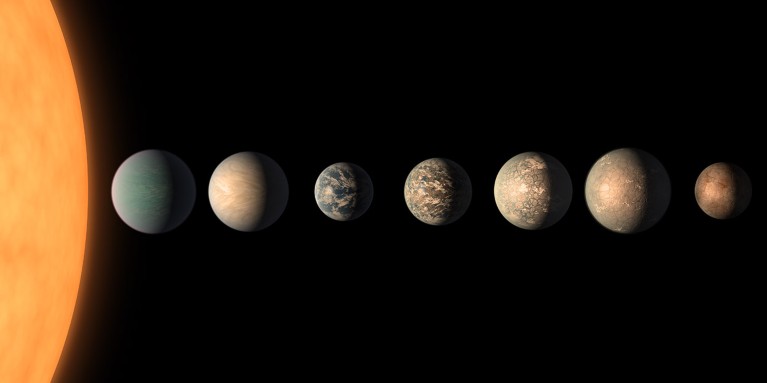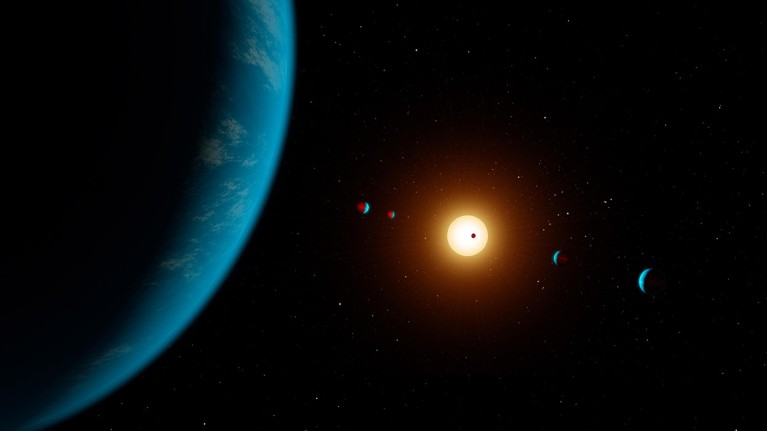4.10.2025
Space scientists look back on 30 years of exoplanet discoveries — from rows of massive ‘super-Earths‘ to worlds with perfectly synchronized orbits.

An artist’s impression of Proxima Centauri b, one of the planets orbiting the closest star to the Sun. Credit: Ramon Andrade 3DCiencia/Science Photo Library
Thirty years ago this week, two Swiss astronomers announced that they had spotted the first known planet orbiting a Sun-like star. The Nobel-winning discovery, later published in the pages of Nature1, was the culmination of centuries of dreaming, and decades of searching, for worlds beyond the Solar System.
It was also the start of a whirlwind of discovery. Astronomers have since found more than 6,000 exoplanets, plus hints of thousands more. Many were detected by NASA’s Kepler and Transiting Exoplanet Survey Satellite (TESS) missions, with other telescopes also contributing (see ‘Alien worlds’).
The exoplanetary zoo hosts a diversity of beasts. There are ‘hot Jupiters’ that whirl closely around their stars, including the planet discovered 30 years ago, which is orbiting the star 51 Pegasi. There are ‘super-Earths’ and ‘mini-Neptunes’ — categorized because of how their masses compare with those of planets in the Solar System — which are some of the most common exoplanets found so far. There are systems crammed with multiple planets that move in almost musical rhythms with one another; rogue planets floating freely in the Galaxy; and alien worlds that circle two stars at once, just like the fictional Star Wars planet Tatooine.

Source: NASA Exoplanet Archive
“Each is a whole brand-new world, brimming with possibility and potential, usually unlike anything we’ve seen before and challenging our notions of what ‘normal’ planets and planetary systems look like,” says Jessie Christiansen, an astronomer at the California Institute of Technology in Pasadena.
Nature asked some astronomers about their favourite exoplanets — and got wide range of suggestions.
Proxima Centauri: Nearby and visitable
At the top of many recommendation lists are the two — or possibly three — small planets that orbit Proxima Centauri, which is the closest star to the Sun — just 1.3 parsecs away in the constellation Centaurus.
The first Proxima planet was found in 2016 using the European Southern Observatory in Chile2. It is probably Earth-sized and orbits within its star’s habitable zone, the distance at which liquid water could exist on its surface. A second confirmed planet lies just outside the habitable zone and is probably a little smaller than Earth.
The nearness of Proxima Centauri means that these planets are the best choices for an interstellar spacecraft to visit, says Jean Schneider, an astronomer at the Paris Observatory in France. The first effort to develop such a craft — a US$100-million project known as Breakthrough Starshot — has reportedly floundered.
Still, “before the end of the century we will go there”, Schneider says.

There are seven Earth-sized planets in the TRAPPIST-1 system.Credit: NASA/JPL-Caltech/R. Hurt, T. Pyle (IPAC)
TRAPPIST-1: Earth worlds all in a row
Another favourite is the planetary system around the star TRAPPIST-1, which lies around 12 parsecs from Earth in the constellation Aquarius. Seven Earth-sized worlds orbit the star, discovered in 2016 and 20173.

